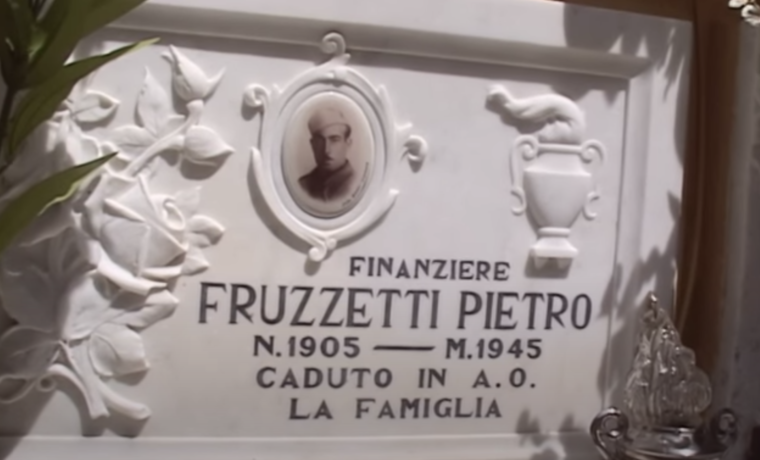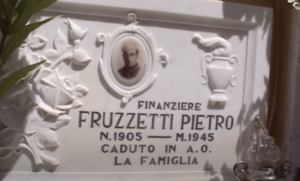Östör Celebrates 6 Films Featured at Smithsonian Festival

Ákos Östör, professor of anthropology, emeritus, and his wife, Lina Fruzzetti, a professor of anthropology at Brown University, co-produced six films that are now being included in a retrospective hosted by the Smithsonian’s Recovering Voices Initiative for the annual Mother Tongue Film Festival.
The festival features diverse films which explore language and knowledge around the world. This year’s theme is “The Healing Power of Storytelling.” While the festival must take place online due to the COVID-19 pandemic, each film is available to stream throughout the spring for a certain window of time. Östör and Fruzzetti also participated in a virtual roundtable discussion on March 19 to discuss their films through an anthropological lens.
Of Östör and Fruzzetti’s six films in the festival, one is a documentary feature and the other five are documentary shorts.
 The feature film, titled In My Mother’s House (2017), follows Fruzzetti as she uncovers the history of her Italian father and her Eritrean mother after receiving a letter from a long-lost relative. The film is set in the United States, Italy, and Eritrea as Fruzzetti learns more about the intersection of her family’s past and the history of these countries through her travels.
The feature film, titled In My Mother’s House (2017), follows Fruzzetti as she uncovers the history of her Italian father and her Eritrean mother after receiving a letter from a long-lost relative. The film is set in the United States, Italy, and Eritrea as Fruzzetti learns more about the intersection of her family’s past and the history of these countries through her travels.
At the roundtable discussion, Fruzzetti spoke about the process of telling her mother’s story.
“Here is a story of a woman that gets appropriated across generations of people [who] come to see it,” Fruzzetti said. “But most people…tell us how the film affected them. We had no idea that’s what [would] happen to the film. My interest in the film isn’t in the technicalities of the filmmaking itself, but in the ethnography of it, in the stories that it tells. And every film, I think, has a powerful story that it can tell.”
Östör mentioned how working on In My Mother’s House combined different aspects of his and Fruzzetti’s professional work.
“Even in this film, very personal, the extraordinary thing was how much our work in publication and films and anthropology…coincided and brought together what I like to call the ethnographer’s knowledge with the filmmaker’s art and craft, and then developed these to the betterment of both,” Östör said.
He added that the intersection of anthropology and filmmaking happened naturally for himself and Fruzzetti.
“We never made a decision about whether we were doing film or anthropology. It was, again, because of this ethnographic critical knowledge… we had in the background [that] allowed us to respond,” Östör said.
Östör also spoke about his collaboration with Fruzzetti.
“The first few films in Bengal in fact gave a basis for what we did later,” Östör said. “But the pivotal film that we came to work on together was Seed and Earth, and this one was the product of various circumstances and unexpected developments in the field. But again, the background of fieldwork allowed us to…adapt and deal with what was the reality in front of us.”
Fruzzetti talked about the motivations for making such documentary films.
“All of these films we worked on, we didn’t think that we were doing them to get across [that] this is about change,” Fruzzetti said. “The person seeing them has to decide for himself or herself.”
She emphasized that such films hold the power to change people’s thought processes.
“[Ethnographic films] do change how we think about other people,” Fruzzetti said. “But [they] also change the people themselves who are a part of these films. It’s not like we went thinking ‘this is what’s going to happen.’ You don’t really know.”
Östör highlighted that the films were not intended to change situations, rather, he said they were made to hold up a mirror to life.
“We didn’t set out to make a film that was an intervention or that was investigative reporting, Östör said. “There are a lot of films today that are just that. Some of these films have been recently criticized, for example that they don’t interfere enough, that they don’t instigate. Our answer is that we try to be true to the truth and to the reality.”
The other five of Östör and Fruzzetti’s films are the following documentary shorts:
Seed and Earth (1995), set in India, follows the lives of two brothers and their families in West Bengal through a lens of age and gender.
Khalfan and Zanzibar (2000), set in Zanzibar, Tanzania. The film showcases Khalfan Hamid Khalfan, who runs the Association of the Disabled in Zanzibar, while exploring the island’s history and culture, as well as following members of its disabled population.
Fishers of Dar (2001), set in Tanzania, follows fishermen in Dar es Salaam for a day as they travel to the market and the harbor to carry out their work. Steven Ross ’75 directed the film.
Singing Pictures (2005), set in India, follows a group of women in the village of Naya who formed a cooperative focused on scroll-painting, which they learn and then practice. Their work changes to include contemporary concerns such as women’s issues and other concerns in their society.
Songs of a Sorrowful Man (2009), set in India, centers around Dukhashyam, an artist whose work focuses on Sufism, community engagement, and passing down the knowledge of art history and techniques with future artists.

